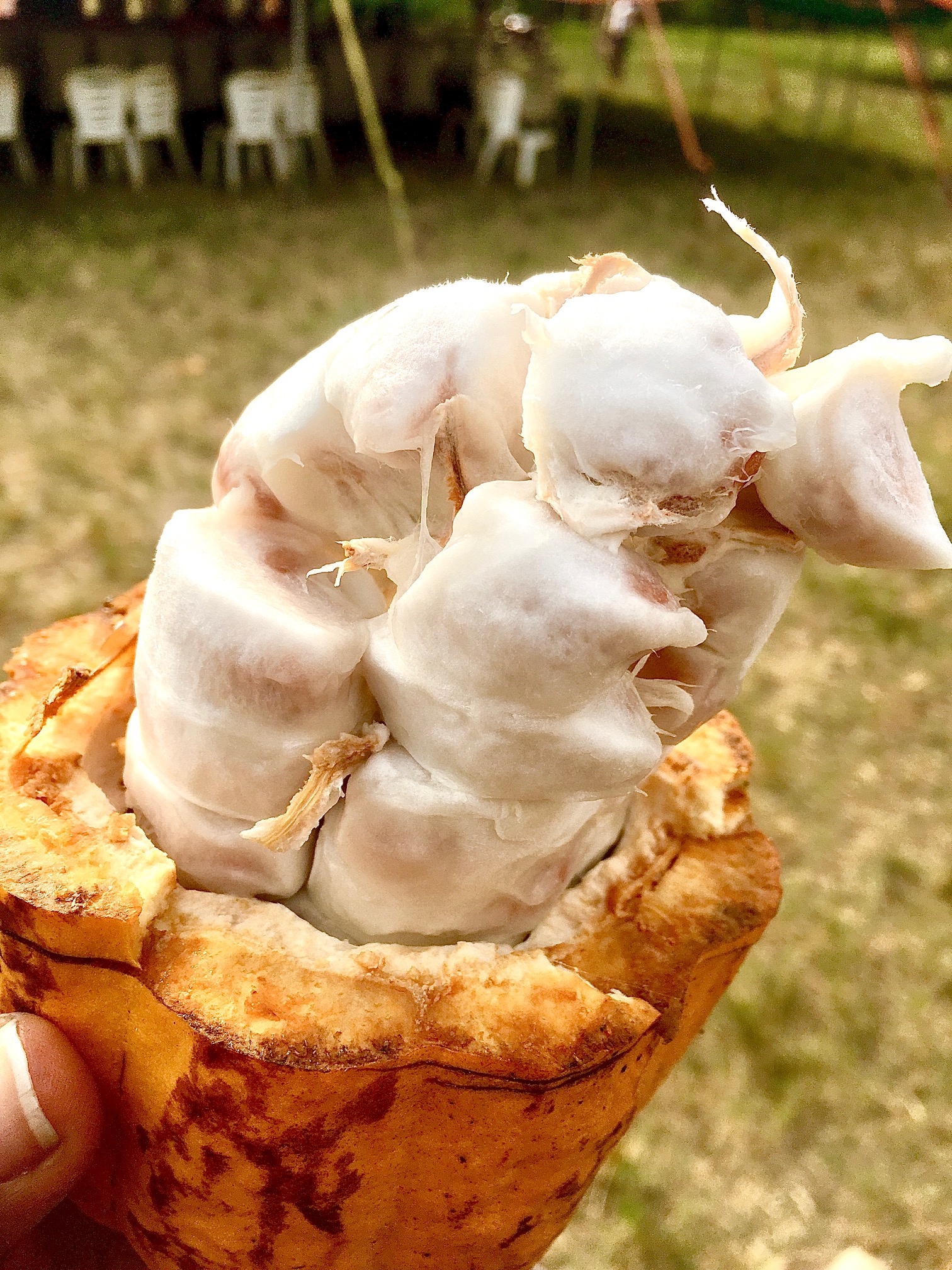History of Chocolate

HISTORY OF THE NIGERIAN CACAO
The earliest cocoa farms in Nigeria were in Bonny and Calabar in the 1870s but the area proved not suitable for cultivation. In 1880, a cocoa farm was established in Lagos and later, a few more farms were established in Agege and Ota. From the farms in Agege and Ota information disseminated to the Yoruba hinterland about cocoa farming, thereafter, planting of the tree expanded in Western Nigeria. Farmers in Ibadan and Egba land began experimenting with planting cocoa in uncultivated forests in 1890 and those in Ilesha started around 1896. The planting of cocoa later spread to Okeigbo and Ondo Town both in Ondo State, Ife and Gbongan in Osun State and also in Ekiti land. Before 1950, there were two main varieties of cocoa planted in Nigeria. The major one was Amelonado cacao which was imported from the upper Amazon river Basin in Brazil. The second was a heterogeneous strain from Trinidad. The Amelonado pods are green but turning yellow when ripe but the Trinidad variety is red.
Culled from Wikipedia
HISTORY OF CHOCOLATE
Chocolate may be the “food of the gods,” but for most of its 4,000-year history, it was actually consumed as a bitter beverage rather than as a sweet edible treat. Anthropologists have found evidence that chocolate was produced by pre-Olmec cultures living in present-day Mexico as early as 1900 B.C. The ancient Mesoamericans who first cultivated cacao plants found in the tropical rain-forests of Central America fermented, roasted and ground the cacao beans into a paste that they mixed with water, vanilla, honey, chili peppers and other spices to brew a frothy chocolate drink.
Olmec, Mayan and Aztec civilizations found chocolate to be an invigorating drink, mood enhancer and aphrodisiac, which led them to believe that it possessed mystical and spiritual qualities. The Mayans worshiped a god of cacao and reserved chocolate for rulers, warriors, priests and nobles at sacred ceremonies.
When the Aztecs began to dominate Mesoamerica in the 14th century, they craved cacao beans, which could not be grown in the dry highlands of central Mexico that were the heart of their civilization. The Aztecs traded with the Mayans for cacao beans, which were so coveted that they were used as currency. (In the 1500s, Aztecs could purchase a turkey hen for 100 beans.) By some accounts, the 16th-century Aztec emperor Montezuma drank three gallons of chocolate a day to increase his libido.
In the 1500s, Spanish conquistadors such as Hernán Cortés who sought gold and silver in Mexico returned instead with chocolate. Although the Spanish sweetened the bitter drink with cane sugar and cinnamon, one thing remained unchanged: chocolate was still a delectable symbol of luxury, wealth and power. Chocolate was sipped by royal lips, and only Spanish elites could afford the expensive import.
Chocolate remained an aristocratic nectar until Dutch chemist Coenraad Johannes van Houten in 1828 invented the cocoa press, which revolutionized chocolate-making. The cocoa press could squeeze the fatty cocoa butter from roasted cacao beans, leaving behind a dry cake that could be pulverized into a fine powder that could be mixed with liquids and other ingredients, poured into molds and solidified into edible, easily digestible chocolate. The innovation by van Houten ushered in the modern era of chocolate by enabling it to be used as a confectionery ingredient, and the resulting drop in production costs made chocolate affordable to the masses.
In 1847, British chocolate company J.S. Fry & Sons created the first solid edible chocolate bar from cocoa butter, cocoa powder and sugar. Rodolphe Lindt’s 1879 invention of the conching machine, which produced chocolate with a velvety texture and superior taste, and other advances allowed for the mass production of smooth, creamy milk chocolate on factory assembly lines. You don’t need to have a sweet tooth to recognize the familiar names of the family-owned companies such as Cadbury, Mars and Hershey that ushered in a chocolate boom in the late 1800s and early 1900s that has yet to abate.
